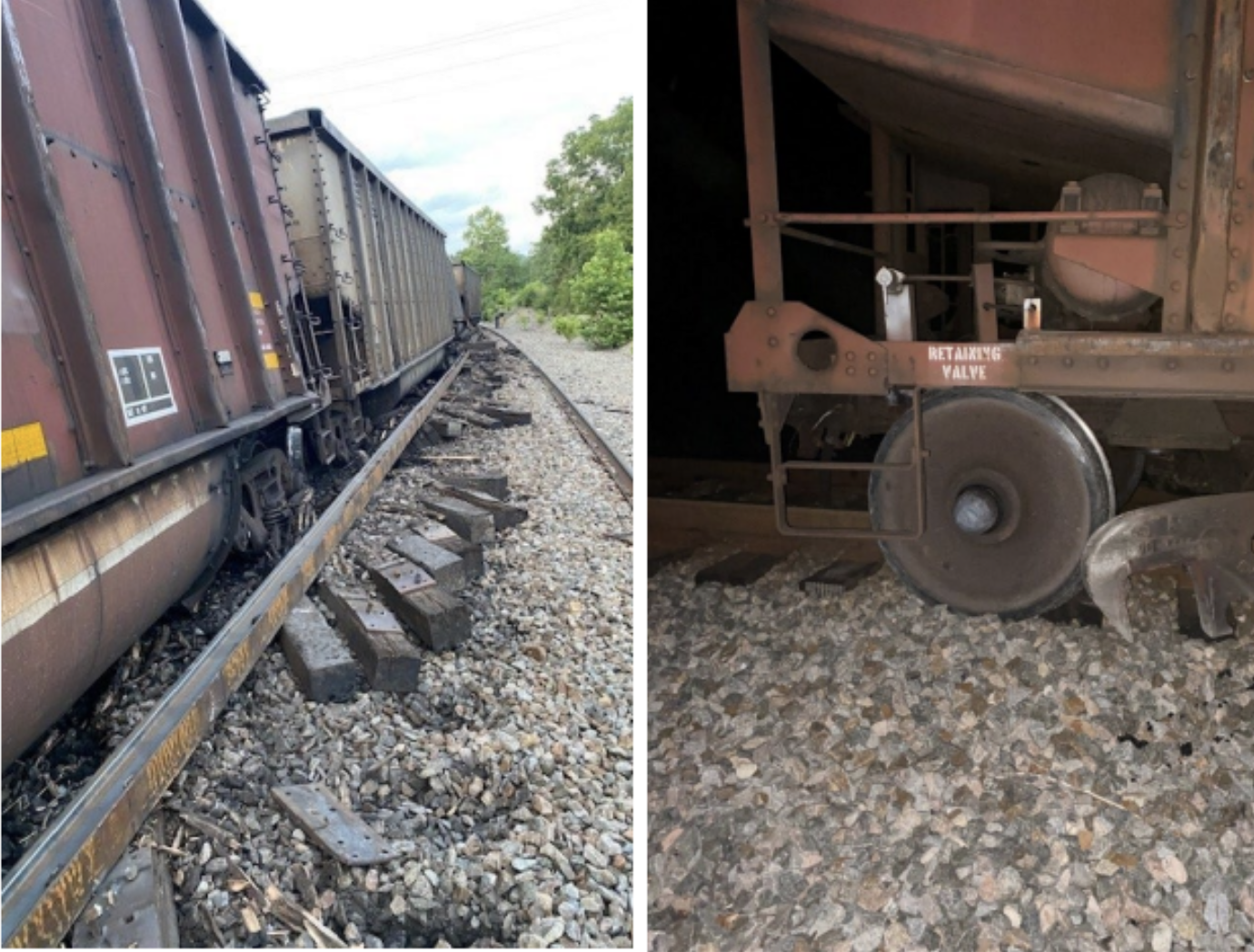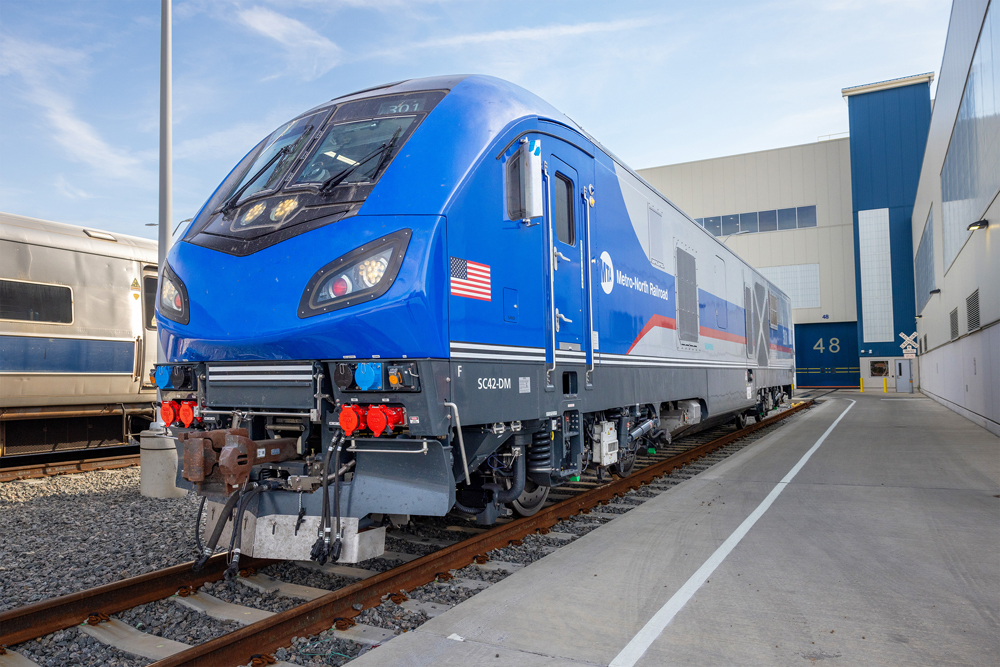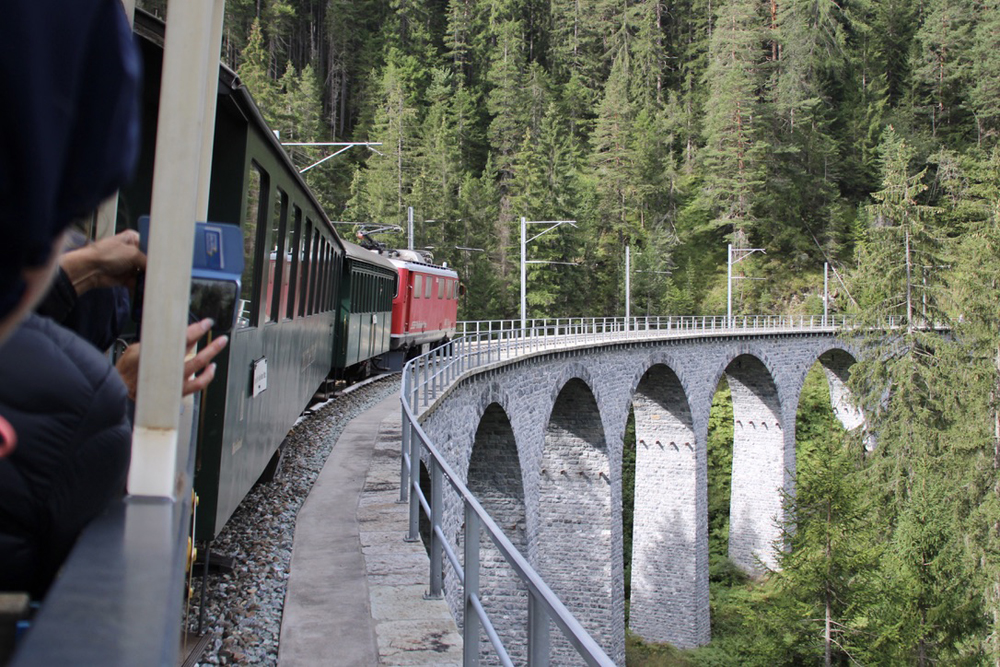
WASHINGTON — The National Transportation Safety Board today released its preliminary report about a Norfolk Southern coal train that derailed in Virginia on July 6 after a wheel bearing failure.
The railroad’s response to hot bearing alerts has been under scrutiny since the disastrous Feb. 3 hazardous materials wreck in East Palestine, Ohio.
In this case, eastbound loaded coal train 814V404 derailed 19 cars on the railroad’s Whitethorne District at milepost 263.7 near Elliston, Va. [see “NTSB to investigate …,” Trains News Wire, July 7, 2023]. No one was injured in the 7:42 p.m. wreck.
At 5:29 p.m., a hot bearing detector at milepost 276.3 transmitted a critical alarm message for an axle on the 71st car of the 105-car train. A critical alarm is triggered by an axle temperature that’s over 170 degrees above the ambient temperature.
After the train stopped, the conductor told the Advanced Train Control desk in Atlanta that the axle was at least 169 degrees or higher and that there was grease coming from the back of one of the axle bearings — a telltale sign of a bearing failure.
The ATC desk in Atlanta instructed the crew to confer with the dispatcher, who gave the crew permission to move the train 13 miles to Riverside siding where the 71st car could be set out. The train derailed en route to the siding.
“On July 7, the day after the derailment, NS issued an operations bulletin providing clarification of the requirements for responding to hot bearing and dragging equipment alarms,” the NTSB said. “The bulletin states that upon receiving a critical hot bearing alarm, the crew must immediately stop the train for inspection. If the overheated condition is confirmed, the crew must inform the ATC desk and seek guidance on moving to the next available set out location. Any authorized movement must not exceed 10 mph, and the defective railcar must be reinspected at least every 3 miles until set out. The bulletin further states that a visual inspection of the indicated bearing and its associated components must be performed. If this inspection reveals exceptions (for example, leaking grease or visible damage), the ATC desk must be notified, and NS mechanical department personnel must perform an inspection before the railcar is moved.”
The 814V404 was moving at 25 mph at the time of the wreck.
While on scene, the NTSB investigators recovered burned-off bearing components, wheels, and axles from the 71st coal gondola.














I think Mr. Saunders approach is the correct path. Whether holding the Main or isolating the car at the siding, a wheel truck should have been dispatched immediately. Maybe it had been to meet the train at the 13 mile siding. Regardless, movement speed was apparently excessive. Of course I have the clarity of hindsight. It does trouble me that the railroads have ‘ranked’ hot bearings. In my experience roller bearings can pass a TBD and be ‘cool as cucumber’ and you will have catastrophic failure 1/4 mile later.
It wonders me, who is on the office end of that radio call?
Is it a qualified M of E foreman, an experienced car repairer or an entry-level clerk with a script?
Irregardless of what any previous rule was, the bearing was noted to be 169 degrees or higher than ambient temperature and was leaking grease. 169 degrees might have well been considered 170 degrees. The ATC/dispatcher seemed to be more interested in getting the train out of the way of other trains than preventing the possibility of a derailment.
Since failure was eminent under FRA and NSTB findings previously found, the train should have been (A) held at location until a RIP or other crew could be relocated to the train for further examination and /or repair, or (B) the locomotives and all cars prior to and including car #71 moved the 13 miles to the siding at VERY LOW SPEED (5-10 mph) to prevent any car besides #71 from derailing and then if the siding was made, the locomotives and all safe cars could be sent back to hook on to the remaining cars and then proceed to the destination while crews exchanged the axle with the hot bearing in the siding.
Choice B was the smart and best solution. This of course would take time but the damage would have been limited to one car and a small section of rail IF a derail occurred rather than 19 other loaded cars being derailed and the incurring track repair and clean-up if any, taking a considerably longer time, as did occur.
Sounds like the ATC desk and the dispatchers need to be on the same page so the train crew can be reasonably given the safest instructions for continuing or staying put until help could arrive.
Dr. Ustun, I categorically disagree with statements 1. & 3. Both are absurd. According to the rules the train after finding a hot journal according to NS rules dictates the movement to set out the car should have been made at 10 mph. According to the rule book and the rule was broken with a recorded speed of 25 mph.
The rule was changed on July 7 to limit speed to 10 mph. I do not see what the rule was prior to that date in the article or the NTSB link.
See the original Newswire article July 7, 2023: https://www.trains.com/trn/news-reviews/news-wire/ntsb-to-investigate-derailment-of-ns-coal-train-in-virginia/‘
This includes: “Randy Fannon, part of the BLET”s safety task force, said the crew had been told it could move the train at track speed, but was uncomfortable doing so and was traveling at 20 mph at the time of the derailment. ” It appears the Event Recorder showed 25 MPH. Same ballpark.
The NS Operations Bulletin was issued the day after, repeat AFTER, the derailment. The crew could not have been in violation.
All the railroad companies should share blame in each derailment!
Dr. Güntürk Üstün
Meanwhile, Norfolk Southern Corp’s second-quarter profit tumbled 55% after the U.S. railroad operator recorded a fresh $416 million charge associated with the Eastern Ohio freight train derailment.
Dr. Güntürk Üstün
This derailment in Virginia refreshed questions about Norfolk Southern’s safety practices.
Dr. Güntürk Üstün